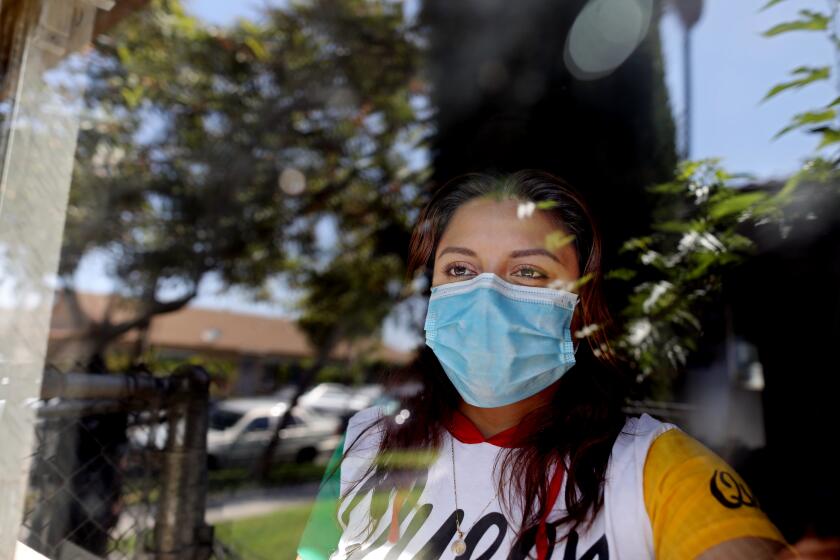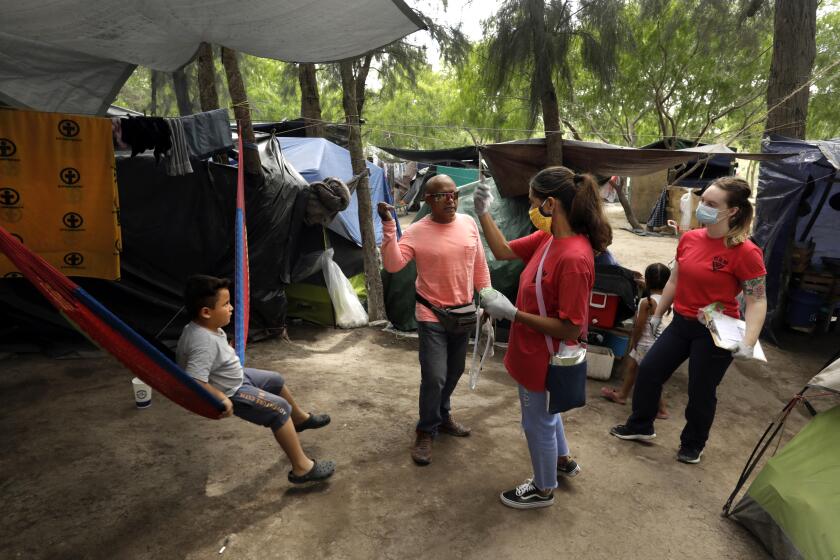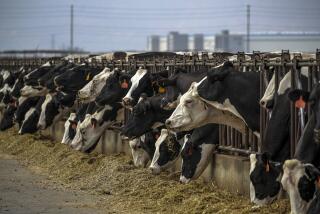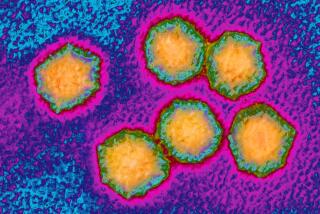Amazon wonât say how many workers have gotten COVID-19. So workers are tracking cases themselves
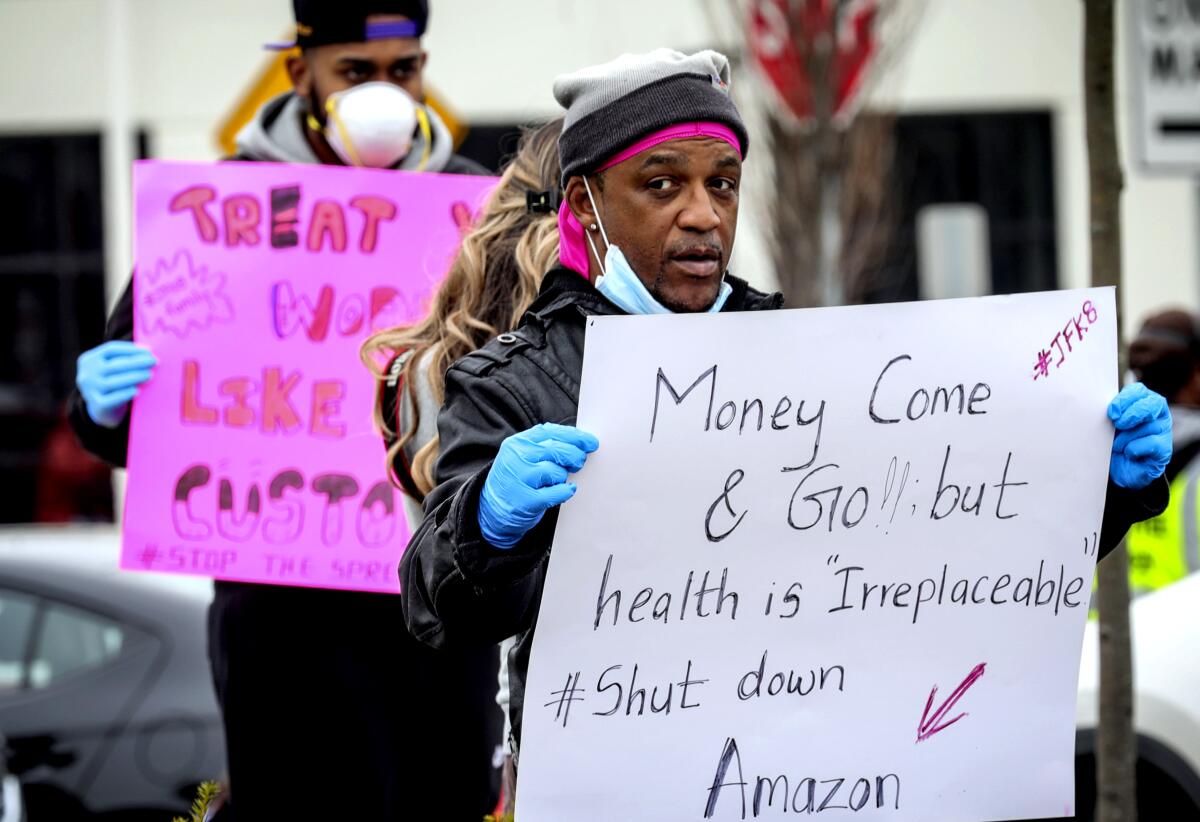
Usually Jana Jumpp works nights loading trucks at an Amazon facility the size of 28 football fields in Jeffersonville, Ind. Now, she spends them shut in her room, clacking away on her sluggish computer.
The emails and Facebook messages from Amazon workers at warehouses across the country tumble in.
2 cases at DEW8
Additional covid19 case at DML2
2 more confirmed cases @ Ric2. Total now is 11, that we have been notified about.
She accumulated 52 new messages between Sunday and Wednesday afternoon this week. Jumpp said that number could climb by 15 in one night.
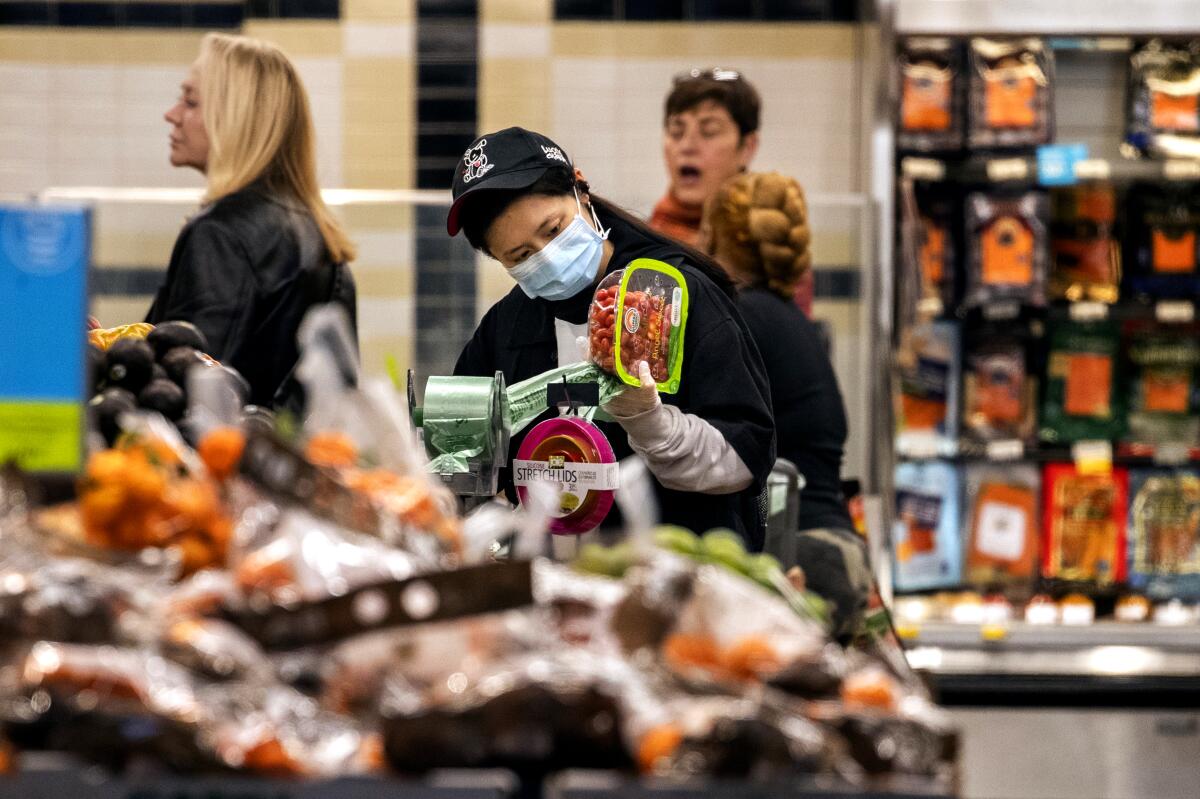
Jumpp has a counterpart at Amazon-owned Whole Foods, Katie Doan, who has been collecting cases since April 2. The two women have never spoken, but they describe nearly identical work fielding a torrent of private messages, searching Facebook groups, Reddit, Twitter and news outlets for reports of infections, and meticulously updating Google documents with the numbers.
Jumpp and Doan, who until this week worked at a store in Tustin, a city in Orange County, say they do this because their co-workers donât feel safe; they arenât able to gauge the risk of reporting for work to their warehouse or store because Amazon wonât tell them how many people are believed to have gotten infected there.
As of Wednesday, 343 Whole Foods workers had tested positive, according to crowdsourced data in a publicly available Google document. Of those, 44 cases are in 24 store locations across California. At least Four Whole Foods employees have died, including a manager at a store in Pasadena.
Across the country, Jumpp has documented 1,079 cases of coronavirus among warehouse workers as of Wednesday, and confirmed nine deaths.
The aggregated numbers almost certainly understate the spread of the virus among Whole Foods and Amazon warehouse employees.
Yet Amazon has challenged the notion that it should be providing fuller data. An Amazon spokesperson said the company does track the information at a site level but does not release the aggregate numbers because those numbers might contain outdated information â cases that were resolved weeks or months ago â and thus are not informative to workers.
The total number of infections in warehouses âisnât particularly useful,â said Dave Clark, Amazon senior vice president of global operations, in a CBS â60 Minutesâ interview that aired in early May.
Dr. David Eisenman, director of the Center for Public Health and Disasters at the UCLA Fielding School of Public Health, disagreed. He said that type of data, correctly gathered, is crucial for reducing future infections of employees and understanding which kinds of job sites and occupations carry elevated risk of contracting COVID-19.
âSaying aggregate data is not useful is like pulling wool over your eyes. Of course itâs useful, weâre using it to open the country up again,â Eisenman said.
Legally, Amazon is within its rights to stop short of the transparency Jumpp and Doan are trying to create. Food businesses are advised to report confirmed cases of coronavirus to the Los Angeles County Public Health Department, and Amazon and Whole Foods representatives told The Times they report confirmed cases to local health authorities. But they are not required to do so.
It is not mandatory for a company to disclose infections to workers unless they are identified as close contacts and subject to quarantine, L.A. Countyâs Disease Control Bureau said.
In a statement, Amazon spokeswoman Lisa Levandowski detailed measures the company has taken to protect workers, such as implementing social distancing, increased disinfectant spraying, temperature checks and distributing personal protective gear.
Many essential workers â cashiers, truck drivers, meat packers â are Latino. They canât stay home. And theyâre being hit hard by the novel coronavirus.
âOur top concern is ensuring the health and safety of our employees, and we expect to invest approximately $4 billion from April to June on COVID-related initiatives to get products to customers and keep employees safe,â Levandowski said. âThis includes spending more than $800 million in the first half of the year on COVID-19 safety measures.â
After someone at an Amazon or Whole Foods facility tests positive for COVID-19, their co-workers usually receive alerts in the form of texts or automated voicemail. âWe continue to follow the guidance of the CDC and will inform anyone who may have had close contact. We have taken measures to keep you safe,â a typical notification reads.
Jumpp, who maintains the Amazon case list with help from several other employees, includes cases in her count only when she can confirm them with documentation: screenshots of the internal company texts or downloaded voicemails.
Unlike Jumppâs tally, the Whole Foods list also includes references to cases posted on Reddit and Twitter. A disclaimer at the top says the marked social media-sourced cases are not â100% verified.â
Complicating these efforts is the patchiness of the notification system. Workers sometimes receive notifications only after a long delay. Sometimes they never come.
At a Whole Foods store in Laguna Niguel in Orange County, notifications are issued seemingly at random. One employee said she received an automated voicemail about the first confirmed case but not subsequent text alerts. She asked not to be named because she feared professional repercussions.
Trained overseas, Cuban doctors treat fellow migrants on the U.S. border, which is effectively closed during the coronavirus outbreak.
Kai Lattomus, an employee at the same store, has received four notifications â a robocall and three texts. But when he mentioned them to co-workers, he said, âmore than half the people you would ask would have no idea, and you were just now informing them.â
While crowd-sourced data also lists four cases at the Laguna Niguel store, Whole Foods disputed that there have been four confirmed cases at the store. A spokeswoman said there were fewer than four, but declined to specify the number of cases.
On April 2 The Times confirmed that a third worker had tested positive at an Amazon fulfillment center in Riverside County, but employees did not receive a company notification until five days later. Employees filed complaints with state and county regulators alleging the delay put thousands of workers at the facility at risk.
Amazon warehouse and Whole Foods employees said that as the number of cases at a facility or store rises, the company typically becomes less forthcoming.
On May 8, an employee at CVG2, a warehouse in Hebron, Ky., received a notification of âadditional confirmed casesâ at the facility and forwarded it to Jumpp. Although previous messages had specified the number of additional cases, this one did not.
Jumpp updated her tally, changing the count for CVG2 from four to five.
But three days later, a worker at CVG2 contacted Jumpp to say her tally for the facility was off.
Harry Sentoso, 63, went back to work at Amazon as part of the companyâs hiring wave. Two weeks later, he was dead from COVID-19.
In an internal memo on May 11, General Manager Paul Swaim said the facility actually had 12 confirmed cases of COVID-19. He said he had received feedback from employees that the companyâs text notification systems often came through out of order or sometimes not at all.
âI realize that this confusion may be leading to a sense that we are being less-than-transparent in the total number of cases at the site,â he wrote, according to a screenshot of the memo reviewed by The Times. âIâm happy to provide this information to you at any time â please just ask.â
The breakdown in communication canât always be pinned on technology.
At the Whole Foods at Fairfax Avenue and 3rd Street in Los Angeles, two employees â who requested anonymity âsuspected something was up the morning of April 2. One overheard supervisors tell Amazon shoppers that if workers stood within six feet of another person it could be grounds for termination. The other learned night employees were told not to come in because a deep cleaning was scheduled. When the first employee asked a supervisor if someone had tested positive, he was told to stop spreading rumors.
Both employees woke up the next morning to automated voicemails notifying them of the first confirmed case of coronavirus at their store.
When asked how early in the day store managers knew about the confirmed case and why workers were told otherwise, Whole Foods spokesperson Rachel Malish said in an email the company wasnât âable to go into full details out of respect for the privacy of our Team Members.â
The Fairfax and 3rd Street store has since had three additional workers test positive for the virus.
Levandowski, the Amazon spokeswoman, said the company examines video footage of employees who test positive and contacts workers known to have been within six feet of the infected individuals for more than 15 minutes. A Whole Foods spokesperson said reviewing video footage is not the only way the company identifies workers who may have had close contact with diagnosed individuals, but did not specify the companyâs other methods.
But many employees say itâs not enough. They feel they are making decisions in the dark because their supervisors refuse to disclose information that could help, such as which departments individuals who have tested positive worked in and where in the store they spent time.
âA lot of workers weâve talked to feel theyâre not given enough information and itâs causing a lot of stress and anxiety. And itâs a safety hazard too, because they donât know what level of vigilance to have and what precautions to take,â said Tim Shadix, legal director of labor advocacy group Warehouse Workers Resource Center.
Levandowski said the company declines to provide additional information, such as an individualâs workstation or department, for privacy reasons. She said the company had not heard about issues with workers receiving text notifications about new cases.
âWhole Foods Market is providing an essential service in our communities and like all businesses operating in this climate, we continue to balance that responsibility with our responsibility as an employer,â a Whole Foods spokesperson said in a statement. âAny notification of a diagnosis in our stores is met with swift and comprehensive action and communication.â
The question of what duty companies have to notify their workers about coronavirus cases is âuncharted waters,â said Laura Stock, executive director of the UC Berkeley Labor Occupational Health Program.
California occupational health and safety law requires employers to keep a record of all injuries and illnesses in a workplace. That record, called âLog 300,â is supposed to be available to workers on request.
Because the coronavirus is a relatively new workplace hazard, that law hasnât been tested with relation to the pandemic, as far as Stock knows.
But an executive order signed by Gov. Gavin Newsom earlier in the month could support an argument that coronavirus constitutes a work-related illness that would need to be recorded in companiesâ Log 300s, Stock said. The order established a presumption in workersâ compensation claims that any essential workers infected with COVID-19 contracted the virus on the job.
Levandowski said she was not familiar with the rule, and could not comment on whether the company recorded coronavirus cases as part of its log.
On warehouse floors, ballooning demand for online orders since the start of the pandemic is putting strain on workers. A shipment of 27,000 pairs of shoes might come into a facility on any given day; a rainbow of boxes, some stamped with brand names, are stacked in rows on towering orange carts.
More people have gone back to work since Amazon ended the policy it implemented at the start of the pandemic, allowing workers to take unlimited unpaid leave without penalty. Whole Foods employees, anxious about safety risks, will see the company phase out a $2 coronavirus-related pay raise at the end of May.
Jumpp has had time to track cases as sheâs been off from work since the end of February; she requested additional unpaid leave in March as soon as the company offered it as an option because of the outbreak. Since she left, one of her co-workers at the facility has died.
She doesnât plan to return to work at Amazon. âI donât feel safe,â she said.
Doan continued to work at Whole Foods until Wednesday; she says she was fired after leaving work without clocking out during a panic attack. (Whole Foods said this account is not consistent with the companyâs reasons for firing Doan, but did not provide further details.) She was pulled aside by her supervisor for a team huddle last week. There had been another confirmed coronavirus infection at her store, he said.
That night, she added it to the Google document, and the total number of cases ticked up.
More to Read
Updates
2:43 p.m. May 29, 2020: An earlier version of this story said at least four workers at a Whole Foods store in Laguna Niguel had tested positive, citing notifications received by a worker there and documentation collected by Katie Doan. A Whole Foods spokesperson said the number of confirmed cases is lower, although she declined to specify the number. The spokeswoman also said the reason Doan cited for her firing, leaving work without clocking out during a panic attack, was not the cause for her termination. This article has been updated to reflect those comments, and to note that both Amazon and Whole Foods report new COVID-19 cases to local health authorities.
